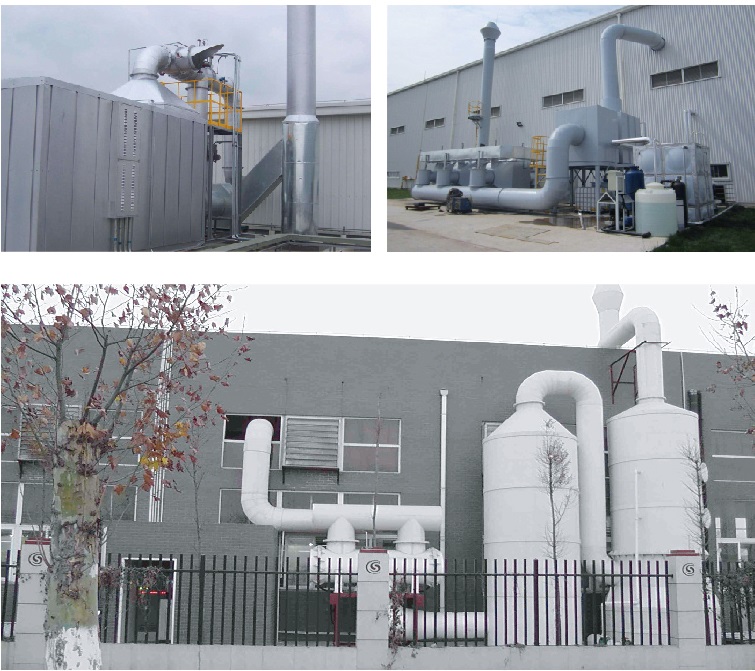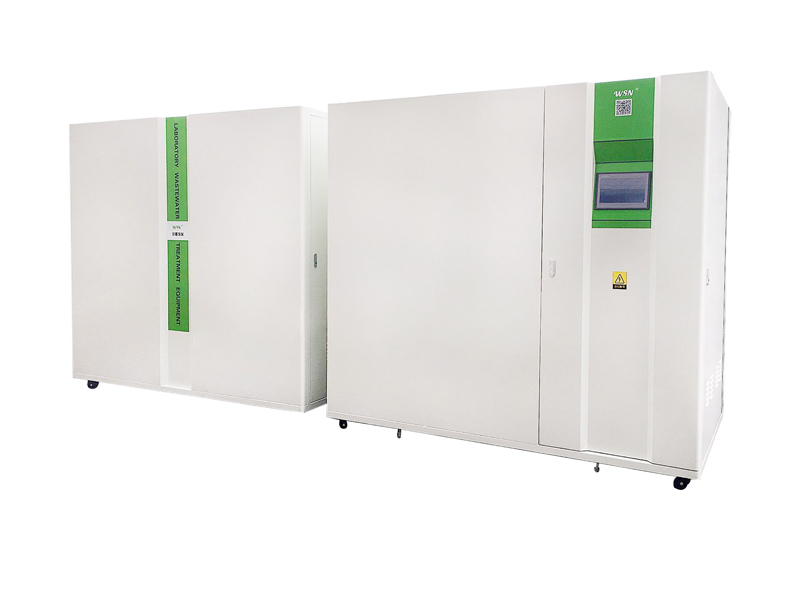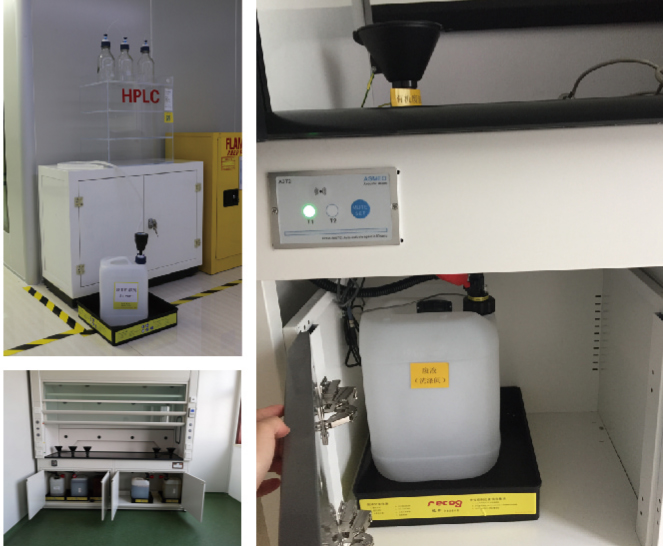一、Laboratory waste gas emission solutions
Source of waste gas
In the process of inspection, identification and testing in the laboratory,Due to the needs of the experiment, various waste gas will be generated,the composition of the exhaust gas is relatively complex:Benzene, toluene, xylene, styrene, etc.;Ketones: acetone, cyclohexanone, methyl ethyl ketone, etc .;Esters: ethyl acetate, butyl acetate, methyl isoacid, banana water, etc .;Alcohols: methanol, ethanol, butanol, isopropanol, etc.waste gas.Also includes nitrogen oxides, sulfuric acid mist, hydrogen chloride, hydrogen fluoride, hydrogen sulfide, sulfur dioxide and other inorganic waste gas;At the same time, there are high-temperature combustion waste gas and dust.
Spray washing structure and working principle
The spray washing tower is mainly composed of the main cylinder, the upper spray plate, the middle packing, the lower spray plate, the cleaning hole, the sight glass hole, etc.,Its working principle is: under the negative pressure of the induced draft fan, the exhaust gas flow is sucked into the air duct and sent into the tower body.The main body of the tower is a circular cylinder, and the washing liquid (sodium hydroxide solution) is injected into the cylinder from the spray tray on the upper part of the washing tower, so that the filler of the entire cylinder is mixed with water to form a mist-shaped washing liquid film. Flow (filling material keeps tumbling under the action of airflow and action, so that exhaust gas and washing liquid are fully mixed).Under the effect of negative pressure, the waste gas rotates and rises in the cylinder, and always rubs against the washing liquid film in the cylinder. Such acid gas is fully wetted and neutralized by the washing liquid film.A cleaning hole is provided at the bottom of the cylinder body to facilitate the bottom cleaning of the cylinder body, and the washing liquid is continuously circulated through the liquid storage tank (water tank) under the action of the water pump, thereby achieving the effect of eliminating waste gas.

活性炭的吸附:
活性炭的吸附可分为物理吸附和化学吸附。
物理吸附:
主要发生在活性炭去除液相和气相中杂质的过程中。活性炭的多孔结构提供了大量的表面积,从而使其非常容易达到吸收收集杂质的目的。就像磁力一样,所有的分子之间都具有相互引力。正因为如此,活性炭孔壁上的大量的分子可以产生强大的引力,从而达到将介质中的杂质吸引到孔径中的目的。
必须指出的是,这些被吸附的杂质的分子直径必须是要小于活性炭的孔径,这样才可能保证杂质被吸收到孔径中。这也就是为什么我们通过不断地改变原材料和活化条件来创造具有不同的孔径结构的活性炭,从而适用于各种杂质吸收的应用。
化学吸附:
除了物理吸附之外,化学反应也经常发生在活性炭的表面。
活性炭不仅含碳,而且在其表面含有少量的化学结合、功能团形式的氧和氢,例如羧基、羟基、酚类、内脂类、醌类、醚类等。这些表面上含地氧化物或络合物可以与被吸附的物质发生化学反应,从而被吸附物质结合聚集到活性炭的表面。
活性炭的吸附正是上述二种吸附综合作用的结果。
二、Source of Wastewater
1.1 Inorganic Wastewater
Processed wastewater: Laboratory inorganic wastewater produced by reagent, test solution, instrument cleaning, etc;
Heavy metal processing: Lead, manganese, zinc, etc
pH value: Nitric acid, hydrochloric acid, sulfuric acid, hydrogen peroxide, potassium chloride, calcium chloride, etc
1.2 Organic Wastewater
Processed wastewater: Laboratory organic wastewater produced by reagent, test solution, instrument cleaning, etc;
Processed organic matter: Trichloromethane, toluene, phenol, organophosphorus pesticide, etc
pH value: Nitric acid, hydrochloric acid, sulfuric acid, etc.
产品特点:
实用性广泛,可适用于有机、无机、综合型等各类实验室的废水处理;
采用多项最先进的专利技术对废水进行多程序处理净化,达到国家排放标准;
采用可编程控制器,可升级成自动控制与监控、自动记录、管理历史运行水质、水量及控制系统的升级;
全程实时显示水质、运行状态、参数、工作压力、流量、在线液晶监测、反应水箱高中低液位等;
设备可对需要清洗和冲洗的部件进行自动清洗,延长设备使用寿命;
系统集中控制,“一站式”一体化设计,无需挖多个处理池,占地面积小,外观高端大气,静音运行,耐酸碱腐蚀,无废渣、废气、废水等二次污染;设备符合GLP(实验室优良标准)设计;
处理工艺使用规范商品名称的水处理药剂,确保可靠运行、降低运行费用。

实验室废液收集
